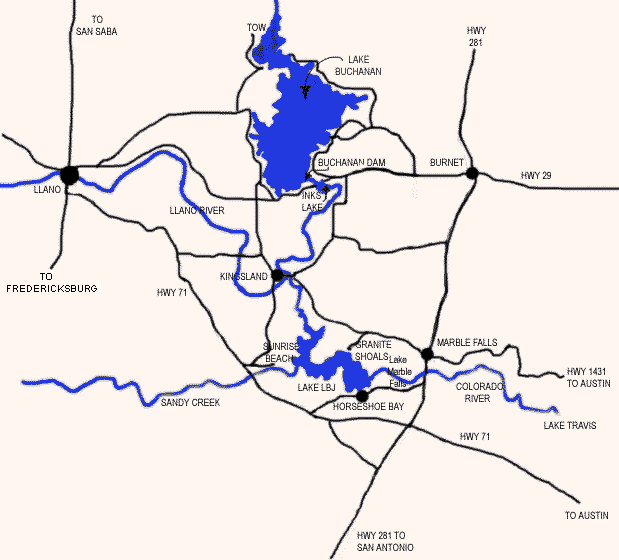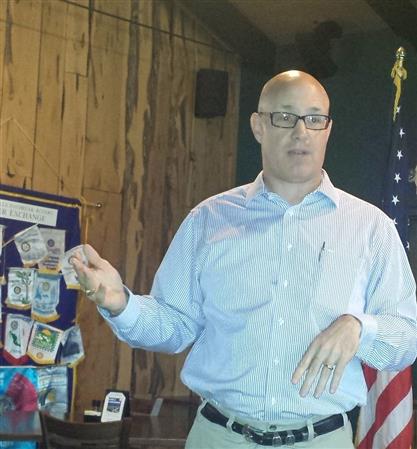Managing Floods in the Highland Lakes
Posted by Gil Jones
on May 11, 2016
Necessity is the mother of all invention, and so it was in taming the Lower Colorado River. John Hofmann, Executive Vice-President - Water - for the LCRA gave Daybreakers a brief history of the dams and explanation of LCRA's water management.
John shared some interesting facts that are not well known to most of the general public. Starting at the top of the lake chain, Buchanan Dam is the longest arched dam in the U.S. There exists a current controversy in the level of Lake Buchanan being held at 1018 instead of the "official" full level of 2020. The dam is managed with an agreement with FEMA to hold it at 1018' MSL between May and October, the usual "wet" seasons, and for the additional need of repairs and enhancements to the gate lifting system which until now has been by an operator manually attaching one gate at a time to the lift system -- by physically walking on the dam!

Inks Dam (it and Buchanan being the only dams bearing the name of the lakes they impound) has no flood gates and all water simply passes over the dam. This causes an automatic flooding of low areas in the Inks Lake basin during releases of water from Lake Buchanan. Inks, LBJ and Marble Falls are all "pass-through" lakes and not used for flood control or storage purposes. As such, they don't fluctuate in normal times, but are not "constant level" lakes, as was emphasized by Mr. Hofmann.
The only lake in the chain designed specifically for flood control is Lake Travis, impounded by Mansfield Dam. formerly Marshall Ford Dam. It is a U.S. Army Corps of Engineers project managed by LCRA. John explained that Lake Travis has a "full" level, and a "full-full" level -- the difference being 33 feet of "freeboard" to allow for flooding. In the record flood of 1991 Travis came within 2.7 feet of the full-full level.
LCRA has an important service to the public for anyone having interests in potential flood areas. It is a phone/text notification system known as the Floodgate Operations Notification Service (FONS). As explained on the site, "FONS will email, text and/or call subscribers with a recorded message to alert them that floodgate operations are expected to begin or have begun at any of the Highland Lakes dams."
The Lower Colorado River Authority is a nonprofit public utility created in November 1934 by the Texas Legislature. LCRA's mission is to enhance the lives of the Texans it serves through water stewardship, energy and community service. The LCRA develops and distributes water supplies, provides water and wastewater treatment, monitors quality, and pursues conservation through public education.
Great program, John. Thanks for visiting us. Barbara Warden brought the program to us.
